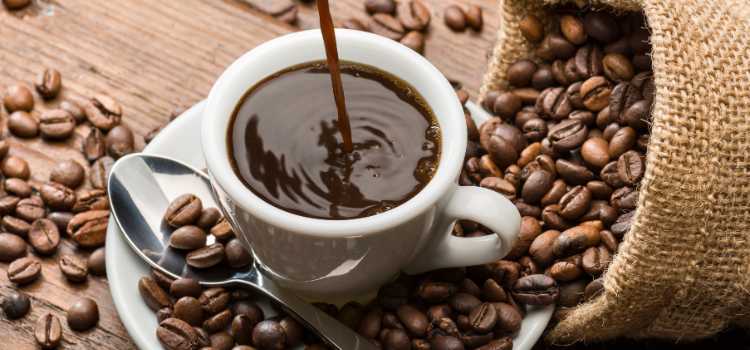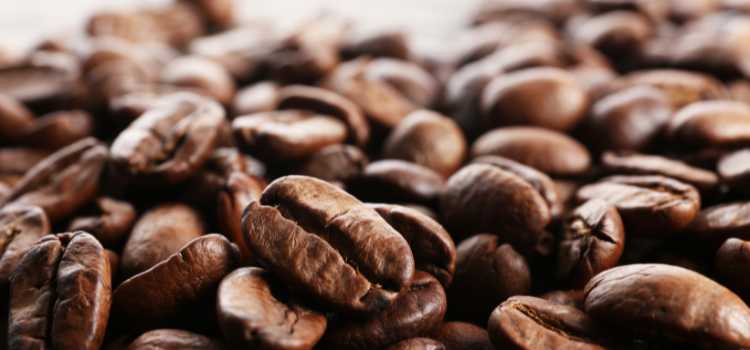As an Amazon Associate, I earn from qualifying purchases

The rise of artisanal coffee has introduced many to the rich nuances and flavors available in a seemingly simple cup. At the heart of this movement is the use of whole beans, which preserve the freshness and complexity of coffee, allowing you to explore its full potential.
When you grind your beans just before brewing, you’re ensuring that every cup is as fresh as possible, capturing the oil and subtle flavors that pre-ground coffee tends to lose over time. This personalization extends beyond mere freshness; it allows you to experiment with brewing techniques, grind sizes, and blends to create a cup that’s uniquely yours.
Selecting the Right Beans
Choosing the right coffee beans is like selecting a fine wine — it’s all about understanding your preferences and exploring the vast range of flavors that different beans offer.
- Types of Coffee Beans: The two primary types of coffee beans are Arabica and Robusta. Arabica beans are known for their sweeter, softer taste with tones of sugar, fruit, and berries, while Robusta beans have a stronger, harsher taste with a grain-like overtone and peanut flavor. Your choice between these will depend on the flavor profile you desire.
- Origin and Roast Level: The origin of the coffee beans greatly influences their flavor. Beans from Africa often have floral and citrus notes, while those from South America might offer chocolate and nutty tones. The roast level, from light to dark, also affects the taste. Light roasts tend to be more acidic with complex flavors, while dark roasts provide a bold, smoky taste.
- Personal Taste Preferences: Your personal taste is the ultimate guide. Do you prefer a bright, tangy cup, or are you more inclined towards a smooth, chocolaty finish? Exploring single-origin beans can provide a consistent flavor profile, whereas blends offer a balanced cup with the best of multiple worlds.
Grinding Techniques to Make Coffee with Whole Beans
Grinding your coffee beans just before brewing is a key step in ensuring the best flavor. However, the way you grind them can significantly influence the outcome.
- Grind Size and Flavor Impact: The size of the grind affects the extraction rate of the coffee. A fine grind results in a quicker extraction, ideal for espresso, while a coarse grind is suited for methods like French Press, where a longer brewing time is required. Too fine or too coarse a grind can lead to coffee that’s either bitter or weak.
- Grinders: Burr grinders are preferred over blade grinders because they provide a consistent grind size. Burr grinders crush the beans between two surfaces, while blade grinders chop them, leading to uneven particles. Consistency is crucial for a balanced extraction and flavor profile.
- Perfect Grind Consistency: For each brewing method, there’s an ideal grind size. Experiment with your grinder settings to achieve the right consistency, and take note of the results. This experimentation will help you understand how grind size affects flavor and allows you to perfect your brew.
Brewing Methods

With your freshly ground coffee, it’s time to choose a brewing method. Each method highlights different aspects of the coffee’s flavor.
- French Press: This method is beloved for its full-bodied flavor. Coarsely ground coffee steeps in hot water for about four minutes before being pressed. The French Press is forgiving and allows for bold, rich flavors to shine.
- Pour Over: This method involves pouring hot water over coffee grounds in a filter. It offers a clean, crisp cup and emphasizes nuanced flavors. The pour-over requires a medium grind and careful control of water flow and temperature.
- Espresso: This method uses pressure to force hot water through finely-ground coffee. It results in a concentrated, robust shot of coffee, rich in flavor and aroma. The key to a good espresso is a very fine grind and the right amount of pressure.
- Other Methods: There are numerous other methods, such as AeroPress, cold brew, and siphon, each offering unique attributes. Explore these to find which suits your taste and lifestyle best.
Tips for Enhancing Flavor
Once you’ve chosen your brew method, there are additional steps to ensure your coffee is as delicious as possible.
- Water Quality and Temperature: Coffee is mostly water, so use filtered water if possible. The ideal temperature for brewing is between 195°F and 205°F. Water that’s too hot can scald the coffee, while too cool won’t extract the flavors properly.
- Bean-to-Water Ratios: The standard ratio is 1 to 2 tablespoons of coffee per 6 ounces of water, but feel free to adjust according to your taste. A higher coffee-to-water ratio results in a stronger cup, while a lower ratio produces a milder taste.
- Storing Whole Beans: To maintain freshness, store your coffee beans in an airtight container at room temperature, away from light, heat, and moisture. Avoid keeping them in the fridge or freezer as this can cause condensation and flavor loss.
Conclusion
Making coffee with whole beans is a rewarding experience that can transform your daily routine into a moment of enjoyment and exploration. From selecting the right beans to mastering the grind and brewing techniques, each step is an opportunity to create a cup that perfectly suits your taste.
Encourage yourself to experiment with different methods and ratios to discover what you love most. With practice and attention to detail, you’ll consistently brew a cup of coffee that’s not just good, but exceptional. Happy brewing, and may your coffee journey be as rich and satisfying as the cup you create.
FAQ
What is the ratio of coffee to whole bean?
When brewing coffee with whole beans, a common ratio is 1 to 2 tablespoons of coffee per 6 ounces of water. This can be adjusted to personal taste, with more coffee resulting in a stronger brew and less coffee producing a milder cup.
How do you make whole bean coffee into instant coffee?
To make whole bean coffee into a form similar to instant coffee, grind the beans into a fine powder using a burr grinder. Brew the powder with hot water and filter out the grounds. This method isn’t true instant coffee but offers a quick, fresh brew.
How to make whole bean coffee without a coffee maker?
To make coffee without a coffee maker, boil water and add coarsely ground beans directly into the water. Let it steep for a few minutes, then use a strainer to separate the grounds from the liquid. This method is similar to cowboy coffee or French Press without the press.
What do you do with whole bean coffee?
Whole bean coffee is best enjoyed freshly ground before brewing. You can grind it to your preferred consistency for various brewing methods. Additionally, whole beans can be used for flavoring desserts, making coffee-infused drinks, or even as a natural deodorizer for your fridge or closet.
As an Amazon Associate, I earn from qualifying purchases